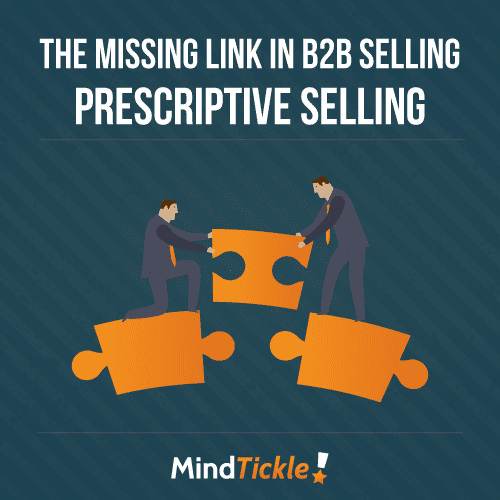Sales training as we know it has changed.
Sales roles are becoming more specialized. In B2B tech this is most prevalent with sales teams divided into Sales Development, Sales Engineering, Account Executives, and Account Managers. Within each of these groups, there is often further segmentation – based on account size, industry, and territory. The larger your sales team, the more specialized your roles are likely to be.
This type of segmentation helps with focus, productivity, and scale. When you dig deeper you find that sales reps are also grouped based on their individual performance – “A” players, “B” players and “C” players form the traditional bell-shaped curve.
While most companies do this and it is commonly accepted, one important element seems to ignore the different segments – sales training. Training is rarely tailored to suit the different needs of each segment of the sales organization.
Routine training sessions tend to be mandatory and pushed out to all reps at the same time. Sales kickoffs, whether annual or quarterly, are notorious for treating all reps the same. Forcing them to sit in a room for hours on end listening to the same sessions. And even sales onboarding programs tend to be structured for the masses. The entire class of new hires have the same training sessions and only break apart for separate sessions that are based on the rep’s main role (e.g. SDR vs AE).
These training sessions also rarely engage reps or require them to demonstrate outcomes. There may be a quick test at the end to make sure they heard everything, but it rarely provides any real information about whether the reps are sales ready for their specific role. We know sales reps thrive on outcomes – they chase revenue because they have targets, they use content because it helps accelerate deals – so why don’t we train them to sell better rather than just rote learning?
New technologies are more convenient for training. They enable on-demand and online training and give reps the ability to consume training content at their own pace. But this approach lacks a basic tenet of adult education – it needs to take into consideration the learner’s experience, background, and preferences (e.g. accessing training and content on mobile devices vs computer).
This means your top-performing reps should be treated differently to your middle performers when it comes to learning. But that’s not all. It’s also important to understand exactly what areas of improvement each person needs and how to improve their performance.
Mapping competencies in sales training and enablement initiatives
When it comes to sales enablement, the most mature companies have created specific models for sales competencies. These have been developed with full buy-in from the company’s leadership. They understand that an ideal sales rep has certain skill sets and follows particular behaviors, and have codified those into different categories. How reps are measured is also clearly communicated to them.
Taking each of these categories into consideration, enablement and training initiatives are then mapped to each category. It’s important to note that ‘training’ and ‘enablement’ are different and the sales team should be evaluated against each of them.
If you map each sales rep against the respective competency list for their specific role you can then identify if there are any gaps and start tailoring their training requirements and deliver specific training to address them. This means each rep will receive very specific training that they require to improve how they sell and excel. Reps that are already at the required competency level won’t have to participate in unnecessary training.
We have also seen companies take this to the next level by tying sales compensation to reps corresponding “sales readiness” levels.
Automating competency mapping
I know this all sounds great, but how do you actually implement something like this without hiring more staff? The answer lies in technology. Traditional LMS focus on solving the perennial HR problem of whether employees have completed their required courses. They tend to focus on compliance rather than building competencies.
Sales reps need to build specific sales competencies and leaders need to see how each directly contributes to revenue. That’s why sales readiness technologies have gained traction. They help companies transform their approach to sales training. They can do this in several ways including:
- Identify trends in sales performance: Using outcome-driven analytics your leaders can see how teams are performing against specific sales competencies and identify trends. For example, see what kind of information or training teams have completed (like commercial insights, negotiating techniques or pricing), and determine which of these are translating into more sales.
- Identifying competency gaps: Using analytical tools that allow you to drill down into regions, territories and even individual sales reps, you can see whether there are any gaps in sales competencies or if perhaps there are other areas that need to be addressed.
- See the big picture: Put all your training initiatives into one place – including role-plays and coaching initiatives – so you can have a precise picture of their combined impact in achieving the competency levels. This also allows you to identify opportunities to tweak or even create new programs.
- Share insights and reports with sales leadership: It is easier to demonstrate what leaders need to do when you can show them hard data. By proactively sharing reports on gap analysis along with your suggestions for improvement, you can highlight how sales performance can be improved.
- Demonstrate how training has improved sales: Overlay the reports on your training and enablement programs with pipeline and sales reports to show just what improvements the initiatives have made to topline revenue, your pipeline, and deals.
Sales readiness technology has the power to help your sales organization refocus your training toward sales competencies. This can dramatically change how your training is delivered, how your reps perceive sales training, and your sales team’s overall performance.
The end of traditional sales training is nigh and successful companies are already riding this new wave of competency-based dynamic training. It’s helping them scale their sales teams and enabling them to beat the competition. Are you ready to jump onboard?






